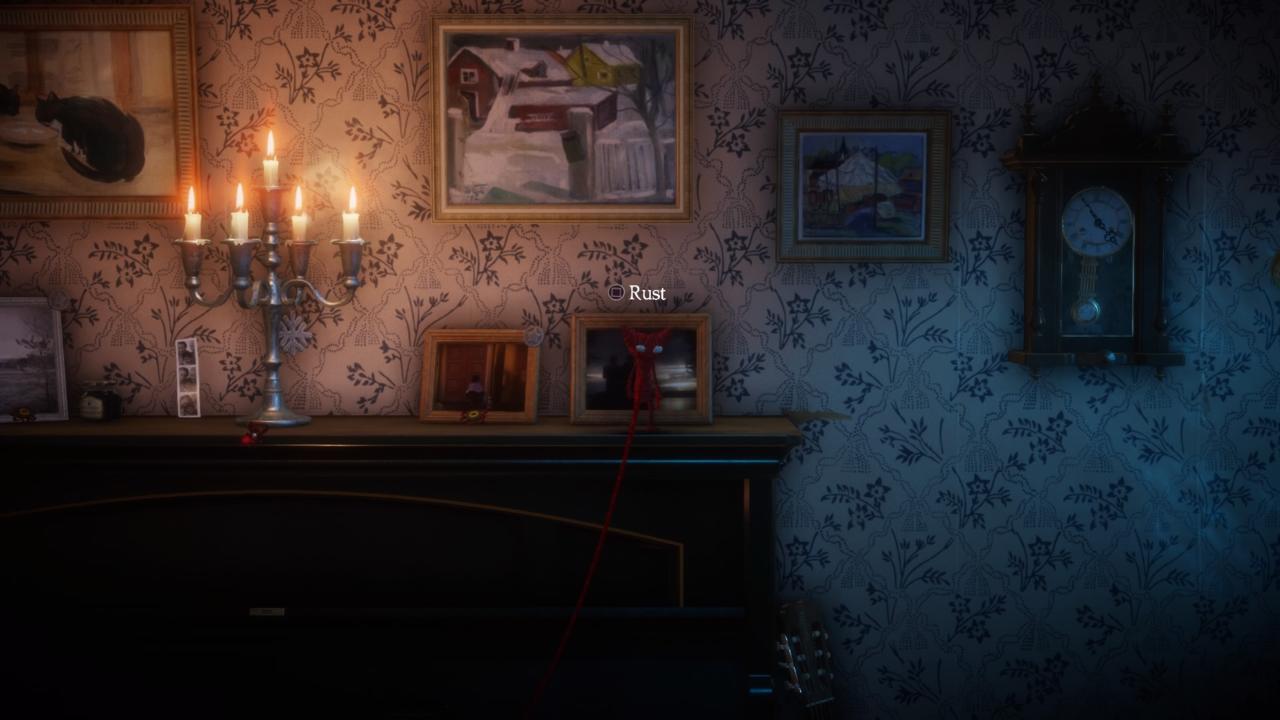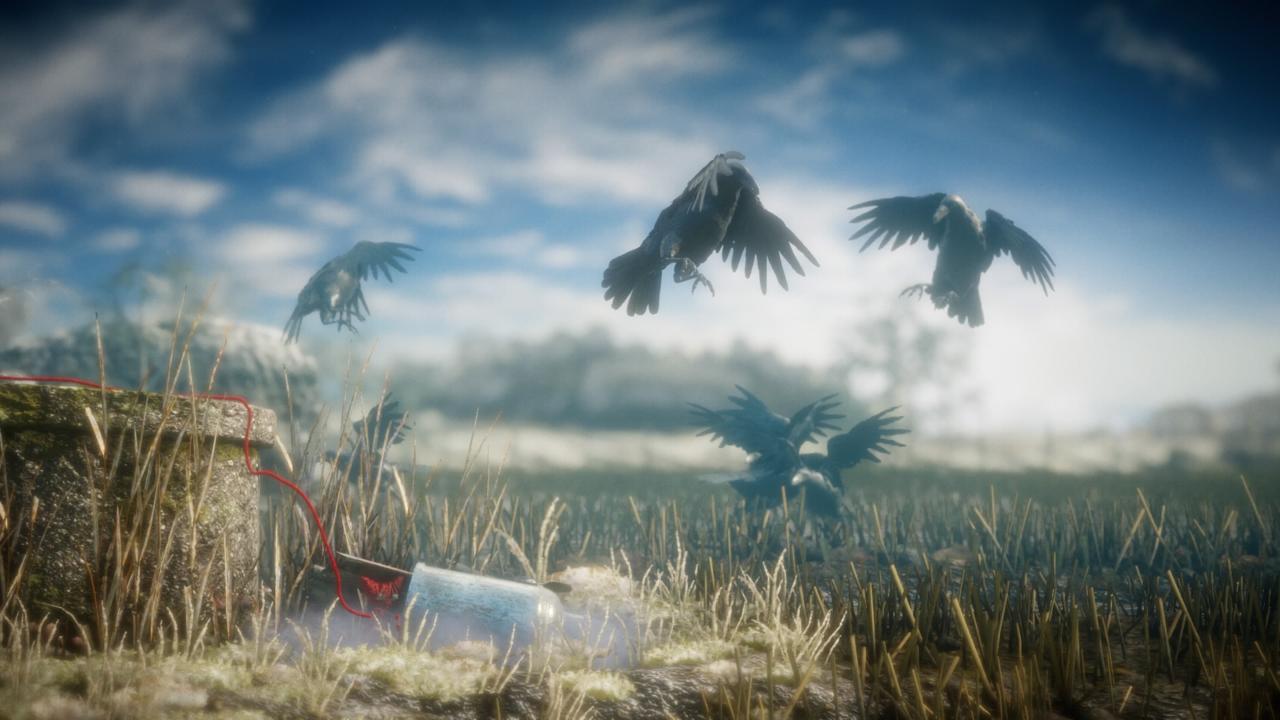As my eight-inch Yarny doll hung for dear life on a thread of wool, swinging his way across the dark underbelly of a seaside pier, my immediate thoughts were not concerned with his well-being. I was instead overcome with nostalgia. There’s something incurably wistful about the sounds of seaside that always seems to lure out childhood memories.
Reminiscence is Unravel's defining quality. I'm not the type who goes weak at the sight of a floating plastic bag, but at the conclusion of this eight-hour adventure, I was moved by what it was communicating about my past. Its message is an uncomplicated, naked truth, powerful in its simplicity.
Deliberately throughout, Unravel tries to kick loose memories submerged at the ocean bed of your mind--those you treasure, those that still hurt, those that are both--and asks you to let go of them again. Not easy, no, but helpful. It does this by looking through its own backstory, at pictures of its past, through scenes and moments that you’ll likely relate to.

Hence the seaside level. The lazy afternoon in the back garden level. The cold and drizzly trip through the woods level. An identical Xerox of your life this is not, nor does it need to be. Unravel is more like an aroma you remember but can't quite put a time or place to. The memories it conjures are inexact yet poignant.
Otherwise it's a fairly standard puzzle-platformer, mechanically at least. Yarny, our accident-prone, panicky hero made of wool, overcomes puzzles and obstacles by fashioning tools from his skin of string. But if you're curious about Unravel simply because you want to test your frontal lobe and thumb reflexes, this game will come off as solid but unspectacular. It isn't The Witness or N++.
In a manner similar to Mario 64's castle paintings, Unravel's dozen levels are entered via framed photos dotted around an elderly lady's home. Whereas Nintendo's seminal platformer transports you to fantasy worlds of Goombas and Chain Chomps, here each picture sends you to what appears to be the time and place they were snapped in. Somewhere along the backgrounds of these 12 landscapes you'll find the subjects of each photograph, suspended in eternal camera poses, assembled in a towering glitter of fairylight. If real life has blessed you with happy memories of your own, you will see yourself in some of these photos, and it will ache.
If you're curious about Unravel because you want to test your frontal lobe and thumb reflexes, this game will come off as solid but unspectacular.
Physicists among you; please don't ruin your evening trying to make sense of the level-to-level objectives. At the end of each world, Yarny collects a knitted badge that, when returning back to the elderly lady's home in the present day, he places onto an empty scrapbook, thus populating it with photos from within each memory. Schrodinger sends his regards.
How you reach each level’s finishing-line is the meat of the dish. Yarny is no taller than a wine glass and certainly more fragile, and it’s these drawbacks which amplify the challenge of something as simple as walking across a back garden. He is adorably useless, insofar as he can't swim or talk or punch or duck or back-flip or any of the arbitrary qualities of Mario and co. As he meanders through each world, Yarny's body unravels (think trail of breadcrumbs) which means if he walks too far he is reduced to a gaunt wireframe, tethered to the spot, tugging on his remaining stretch of string. Balls of wool, scattered throughout each world, must be routinely collected to replenish Yarny's ever-thinning body, and on occasion you'll also need to backtrack and simplify his trail in order to free up some slack.
But Yarny's weakness is also his strength. His party trick is throwing a lasso of string out from his arm, Spider-Man style, which allows him to climb over rocks, abseil down trees, and swing across perilous puddles of rainwater. Conveniently, each level is dotted with knots of wool that Yarny can attach his string to, thus creating a range of tools from rope bridges to trampolines. Most obstacles, certainly from the second level onwards, demand a mixture of these tools fashioned in the correct order.

If at some point over the past 300 years you got round to reading Gulliver's Travels, you'll know Unravel's depiction of life at ankle height is hardly innovative. The execution is very impressive nonetheless, showcasing an impeccable attention to detail as you saunter through its dusty wooden floors and lush garden undergrowth. It's the little things--quite literally--that win you over. Like how slabs of pier-wood have swollen and fractured from years of tidal abuse, or how the paint at the base of banisters has cracked and formed into a brittle skin.
Much of Unravel's charm comes from how its puzzles, and their solutions, are concocted from everyday items. So a crushed can of cola is a couch-sized step, a fallen tree branch is a makeshift bobsleigh, a filthy fishing lure is an urgently required lifeboat, and a neglected bucket becomes an indispensable force field. Such imagination spreads into hazards and obstacles too. A clump of garden weeds is an impassable thicket. A murder of ravens becomes a terrifying fleet of Stuka dive-bombers. A field vole becomes your worst nightmare.
Such a shame that the puzzles don’t reach the same standard. Aside from a few memorable exceptions, Unravel's underpinning mechanics prove too basic, to the extent that most conundrums aren't particularly satisfying to overcome. Eventually some solutions can be gathered just by observing the convenient placement of knots around you. The challenge becomes threadbare (sorry), with a lack of pondering and experimenting and stumbling into new problems. I found that, by level five, the challenges had lost creativity to the extent that they began to outstay their welcome. Unravel is also very good at exposing its own problems, particularly because most levels drag on a little longer than they should.
Sometimes Unravel doesn't play by its own rules either. The length of your lasso, for example, occasionally stretches beyond its set limits when the game needs it to. Even more unpredictable is the distance you can travel before your woollen frame diminishes. And while tightly fastening string between knots can create bridges and trampolines, this only works when the game decides. Sometimes your lines will be limp for no reason other than Unravel wants you to solve its problems another way.

Granted, had Unravel stuck to the laws of physics with scientific rigor, it would probably cease to be as fun. But for a game with physical conundrums at its core, it needs at the very least to be more consistent with its laws. Play Unravel long enough and a tiny but noticeable distrust will have built between you and the game. Devastating, really.
Despite that fracture in your relationship with Unravel, you will nevertheless be dazzled by how beautiful it looks. It is strikingly rich in detail, right down to how the moss grows on the neglected side of a stone bench, and how wooden floorboards warp and splinter, to how flakes of dust blink under the gaze of a table-lamp. Yarny aside, the visuals verge on photorealism, but that’s not to say they are merely authentic; Unravel’s abandoned worlds are a ceremony of vistas, all laced a faint hallucinatory quality, like a perfect memory.
The audio design is just as impressive. Unravel features no spoken words or narration, with developer Coldwood Interactive instead hinging much of the narrative on the soundtrack. The gamble has paid off tremendously. The aching sorrow of violins and panpipes, along with the inspirited Celtic folk music, swells and stirs along with you.
Such musical highs and lows are ideal for this storybook adventure; the tale of a doll brought to life who restores the faded memories of his owner. Unravel’s wonderful sights and sounds won’t escape your own memory so soon. But assessed purely on gameplay, it’s everything I tend to fear about indie projects; Beautiful, heartfelt, but like Yarny himself, not robust enough.



















